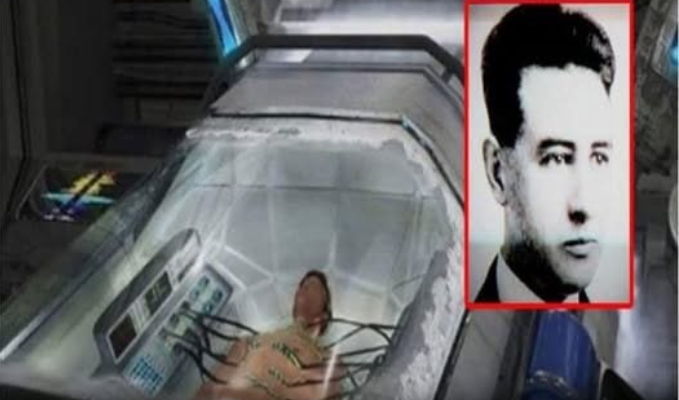In 1967, Dr. James Hiram Bedford, a psychology professor and World War I veteran, made history by becoming the first person to be cryonically preserved. Diagnosed with terminal kidney cancer that had metastasized to his lungs, Bedford faced the harsh reality of limited medical options. Rather than accept a certain death, he turned to a radical and controversial idea—cryonics. Inspired by the book The Prospect of Immortality by Dr. Robert Ettinger, which proposed freezing the human body after death in hopes that future medical advances might one day restore life and health, Bedford took a leap of faith that captured global attention and sparked decades of scientific curiosity and ethical debate.
Bedford’s cryopreservation marked a turning point in humanity’s quest to defy mortality. On January 12, 1967, shortly after his legal death, his body was packed in dry ice and stored in liquid nitrogen to preserve it indefinitely. Unlike conventional methods of burial or cremation, cryonics aims to halt the deterioration of the body immediately after death, with the assumption that future technologies—perhaps centuries from now—may be capable of curing fatal diseases, repairing damaged tissues, and even reversing death itself. While Bedford’s body was initially stored by the Cryonics Society of California, it was later transferred to the Alcor Life Extension Foundation, where it remains preserved to this day.
More than five decades have passed since Bedford’s preservation, yet the fundamental question remains unanswered: can someone frozen today be revived in the future? Current scientific understanding suggests that we are still far from achieving such a feat. Modern cryopreservation techniques have improved significantly since 1967, with advancements like vitrification that reduce ice crystal formation—one of the main threats to cellular integrity during freezing. Still, the complex damage that occurs at the molecular and structural level during freezing and thawing presents a formidable challenge. There are also philosophical and legal questions surrounding what constitutes true death and whether resuscitating someone after decades or centuries would truly restore the person they once were.
Despite these obstacles, cryonics continues to intrigue a niche segment of scientists, futurists, and technophiles. Organizations like Alcor and the Cryonics Institute offer cryopreservation services to individuals who hope to outlive their time. Alcor, where Bedford is preserved, houses over 180 cryopreserved patients as of the 2020s, and continues to research improved methods of preservation. While cryonics remains outside the mainstream scientific consensus and is often criticized as speculative or pseudoscientific, its proponents argue that the odds of revival, however slim, are better than the certainty of death.
Dr. James Bedford’s decision to undergo cryopreservation was both deeply personal and symbolically profound. It represents more than just an experimental attempt to cheat death—it stands as a testament to human hope, imagination, and our unyielding desire to overcome biological limits. His story invites us to reflect on the nature of life and death, the possibilities of future medicine, and the ethical implications of extending human existence beyond current boundaries.
As science continues to evolve—particularly in fields like regenerative medicine, nanotechnology, and artificial intelligence—the idea of reviving cryopreserved individuals might shift from science fiction to plausible reality. Whether or not Dr. Bedford will ever walk the earth again remains to be seen. But for now, he lies in a stainless steel dewar filled with liquid nitrogen, suspended in a state between death and a speculative future life. His preservation is not just a frozen body—it is a symbol of humankind’s enduring pursuit to conquer mortality and unlock the secrets of life extension.



